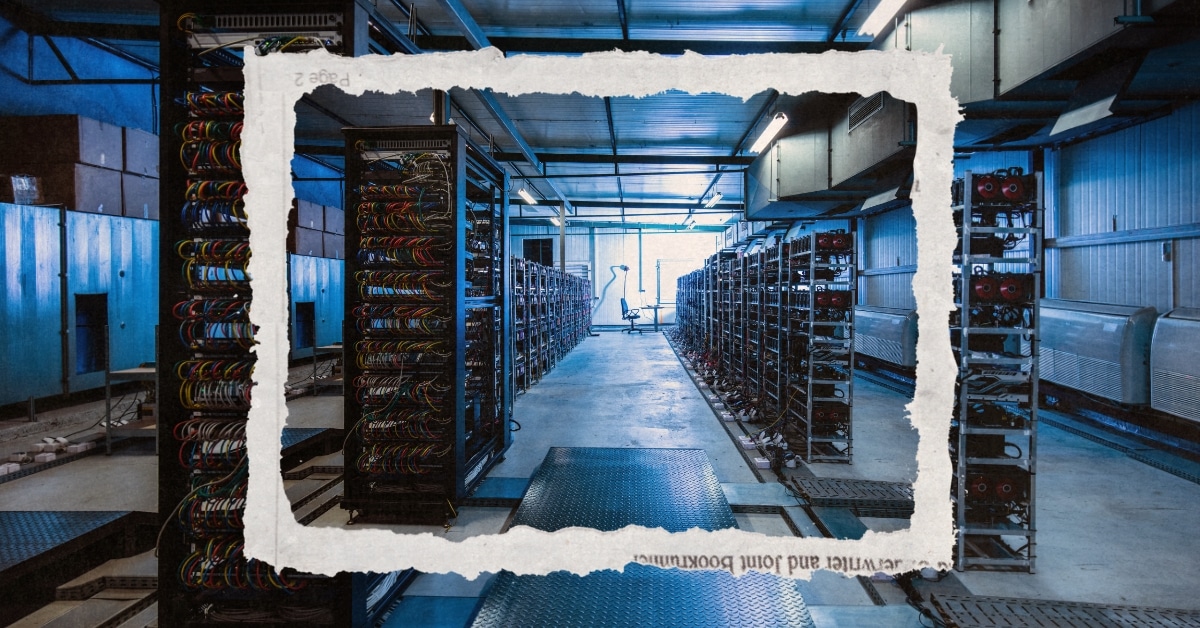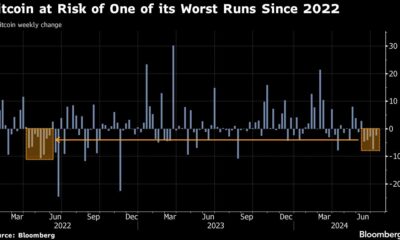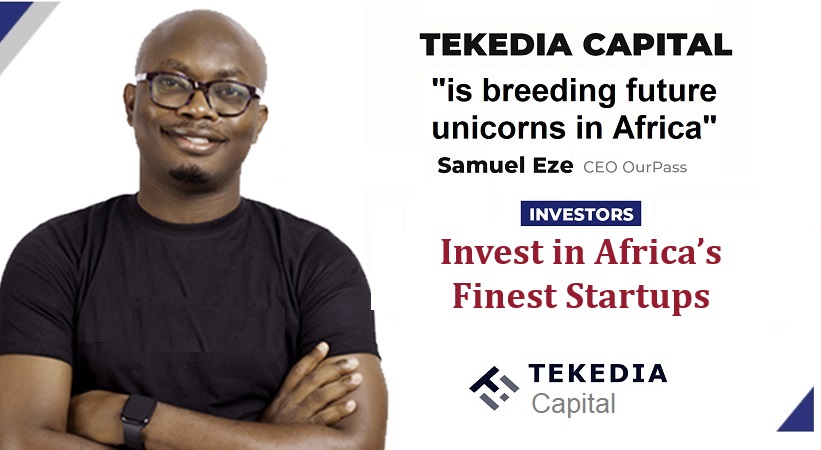News
A familiar road to instant cryptocurrency gains reopens

(Bloomberg) — Cryptocurrency markets boomed in March as Bitcoin hit a record high and billions of dollars flowed into new ETFs. But one particular group of investors had more reason to cheer than most.
Most read by Bloomberg
At the time, startup Monad Labs was closing in on a funding round in which venture capital investors including Paradigm valued it at $3 billion. While important by crypto standards, the Monad deal had another distinguishing feature: Some people known in the industry as “key opinion leaders” were allowed to invest at a fifth of Paradigm’s valuation, people familiar with the matter said .
These “KOL rounds,” which bear similarities to the celebrity deals that U.S. regulators have cracked down on in recent years, have proliferated as digital assets recover from a bear market. This time, the investors getting sweetened terms are more likely to be cryptocurrency bloggers than athletes or reality TV stars.
In exchange for promoting crypto projects, KOLs typically get favorable terms such as valuation discounts and shorter vesting periods, according to interviews with influencers, entrepreneurs and legal experts. The deals have become a source of controversy, with critics focusing on poor disclosure and potential risks to retail investors.
At least some startups raising money do not require influencers to disclose their affiliations, several people familiar with such arrangements said — an apparent violation of U.S. regulations.
There is no indication that Monad Labs’ fundraising violated U.S. securities rules. One investor said the company did not impose any explicit requirements on KOLs. Chief Executive Keone Hon declined to comment on what vesting terms and disclosure rules applied to such investors.
San Francisco-based Paradigm, which runs one of the largest cryptocurrency funds, also declined to comment.
Influencers and cryptocurrencies
“Projects that include opinion leaders and key influencers in a funding round with the expectation that such individuals will go out and promote the project token as an investment may be scrutinized by the Securities and Exchange Commission,” Michael Selig, partner at Willkie Farr & Gallagher LLP, which specializes in securities law, said in an email.
The story continues
KOL rounds exist in part because of some unique characteristics of cryptocurrency markets. While some digital asset startups offer equity capital to raise venture capital funds, others do so by selling the tokens they issue or are affiliated with. The project’s valuation becomes a function of the number of coins sold and their price, similar to a stock sale. There are also hybrid funding rounds that mix tokens and equity, such as Monad Labs.
Buying tokens typically doesn’t offer investors the same protection that equity rounds do, but it offers one big advantage: the ability to sell them in just months, whereas equity investors are often locked in for years before a liquidity event like a ‘IPO. .
Then there is the role that influencers play in cryptocurrency markets. For years, cryptocurrencies have nurtured a cottage industry of famous people ranging from reality stars to athletes and self-proclaimed experts promoting projects online. During the initial coin offering boom of 2017, a large following on “crypto Twitter” could be a ticket to instant riches, in the form of early access to hot tokens and compensation for advertising them.
“Making So Much Money”
It doesn’t always take a lot of following to qualify as a KOL investor.
“Almost anyone with an influence or a community,” said Simon Chadwick, co-founder of crypto platform Eclipse Fi. “It could be someone who has 5,000 people on Twitter and who writes search threads,” he said, referring to the social media platform now known as X.
Eclipse Fi helps projects based on a blockchain called Cosmos launch tokens. To make this process easier, the company has a network of more than 400 KOL investors that startups can tap into, Chadwick said. The potential for quick returns is so great that some influencers try to use fake social media accounts so they can invest in the same funding round multiple times, he said.
According to Chadwick, KOLs in these types of deals can get discounts of 20% to 50% and shorter vesting terms, meaning they can sell their tokens sooner than other investors.
“Some of these KOLs are investing in hundreds of rounds, making so much money,” he said.
The SEC has cracked down on influencer marketing by crypto projects. In October 2022, Kim Kardashian agreed to pay $1.3 million to resolve regulator allegations that she broke US rules by promoting a digital token without disclosing that she was paid to do so. She neither admitted nor denied the charges. Four years earlier, the SEC had fined Floyd Mayweather for failing to disclose a similar crypto deal.

HAMBURG, GERMANY – MAY 7: Kim Kardashian on stage during OMR Festival 2024 on May 7, 2024 in Hamburg, Germany. (Photo by Tristar Media/Getty Images) (Tristar Media via Getty Images)
Emily Meyers, general counsel and chief compliance officer at cryptocurrency fund Electric Capital, said she will caution projects against KOL rounds in light of the SEC’s actions against Kardashian and a similar case last year, in which the regulator accused eight celebrities, including Lindsay Lohan, of failing to disclose that they were paid to promote tokens.
Six of the accused celebrities, including Lohan, settled the case without admitting or denying the SEC’s allegations.
The SEC did not respond to a request for comment on the influencer rings.
“Pump-and-Dumping”
Regardless of the regulatory implications, KOL rounds are becoming controversial in the cryptocurrency industry.
One crypto influencer, who posts on CL, who is based outside the United States and asked that his identity not be used due to the sensitivity of the subject, said it has avoided such deals because of the potential reputational risk.
The surge in KOL deals is “an extension of the pump-and-dumping of small-market-cap tokens, but on a larger scale,” said CL, who has nearly 200,000 followers on X. Influencers’ investments in such deals are often fast-tracked by a “well-known institution” to lend legitimacy to the project and raise prices, CL said.
KOLs are generally willing to accept longer vesting periods in larger deals with large venture capital backers, Eclipse Fi’s Chadwick said. On the other hand, they tend to ask for larger discounts in such transactions, she said.


Because details on influencer purchases are often “difficult to obtain,” venture capital data compilers do not provide separate reports on KOL rounds, said Orla Browne, head of insights at Dealroom.
They often take different forms, with some agreements involving written contracts outlining what KOLs should do in terms of promotions while others are made via Telegram. Some are part of VC-backed funding rounds; others are early-stage projects, not yet mature enough to court major institutions.
While most KOL trades are entirely token-based, some feature a combination of shares and warrants for yet-to-launch digital coins.
A written contract for a KOL funding round, a redacted copy of which was seen by Bloomberg News, specified that influencers who invested at a discount must promote the project through formats ranging from long-form podcasts to TikTok videos. The agreement stipulates that KOLs must disclose their affiliation with the project when advertising it.
But many other projects do not.
“It’s not a requirement,” said 0xJeff, who runs crypto consultancy Steak Capital, which lists “KOL management” among its services. “It really depends on the KOL side whether they want to let the community know that they are invested in the project and that they are affiliated with the project or not,” said OxJeff, who as CL tweets anonymously and asked that their real name not be used .
Diffusion of discomfort
Larger crypto projects typically don’t make explicit requests of KOL investors, said Jed Breed, founder of Breed VC. Instead, such broadcasters aim to create what he called a “whisper network” among the crypto-influencer community. “I’ve never seen a VC deal where it’s like, ‘if you want this allocation, you have to do X, Y, Z,’” Breed said.
Some startups are so interesting that they don’t need to offer heavily sugarcoated terms to KOLs.
Humanity Protocol, which is building a blockchain network that uses people’s palm prints to verify their identity, raised funding at a $1 billion valuation this month from venture capital investors such as Animoca Brands. KOLs invested about $1.5 million in March, but they did so “literally on the same terms as some VCs” and their investments were limited to $25,000 per person, Humanity founder Terence Kwok said.
Joshua Cheong, a product engineer at Parity Technologies who participated as a KOL in Monad Labs’ funding round, said the company didn’t require him to promote the project when he invested. He declined to comment on the valuation and vesting period.
According to OxJeff, US-based influencers are more wary of potential SEC scrutiny and tend to disclose their affiliations when promoting a project or token.
But disruption is starting to creep in throughout the community, regardless of where people are located, OxJeff said. That’s largely because ZachXBT, an influential tweeter with nearly 600,000 X followers whose handle describes him as a “rug survivor,” has begun publicly criticizing the KOL deals.
“I’d be lying if I said KOLs weren’t worried, right? All the KOLs are worried,” OxJeff said. “Especially in these days when there are too many KOL rounds and many don’t do so well.”
Most read by Bloomberg Businessweek
©2024 Bloomberg LP
News
US Cryptocurrency Rules Delayed by ‘Never-Ending’ Lawsuits

Ripple CEO says cryptocurrency industry still seeking regulatory clarity from US
Speaking to Bloomberg News on Wednesday (July 17), Author: Brad Garlinghouse he said America is behind behind other countries which have already adopted cryptocurrency regulations.
“What we’re seeing, where it’s the UK, Japan, Singapore… even the European Union, more than two dozen countries have come together to provide a framework for cryptocurrency regulation,” Garlinghouse said.
“It’s frustrating that we as a country can’t get that regulatory framework in place. And instead, we have this never-ending lawsuit coming from the SEC that doesn’t really address the problem.”
Ripple has been the target of some of these legal disputes. Securities and Exchange Commission (SEC) sued the company in 2020, accusing it of conducting a $1.3 billion operation offering of unregistered securities tied to its XRP token.
However, last year a judge ruled that only Ripple’s institutional sales of XRP, not retail sales, violated the law, a decision widely seen as a victory for the cryptocurrency industry.
As PYMNTS noted at the time, that ruling has “far-reaching repercussions impact across the digital asset ecosystem, which has long maintained that its tokens do not represent securities contracts.”
However, Garlinghouse told Bloomberg on Wednesday that the company cannot wage multimillion-dollar legal battles over each token.
He spoke to the news agency from the Republican National Convention in Milwaukee, where the party is backing the candidacies of former President Donald Trump and Ohio Sen. J.D. Vance, both of whom are considered pro-cryptocurrency.
But Garlinghouse argued that cryptocurrencies “should not be a partisan issue,” and noted that he had recently attended a conference in Washington that included Democrats, including White House officials.
“I think they were there, listening to the industry… it was refreshing to start having that conversation,” she said.
President Joe Biden earlier this year he vetoed a measure which would have ended the SEC’s special rules for crypto-asset custodians. This legislation was supported by both the digital asset industry and the banking industry.
Ripple early this year donated $25 million to the cryptocurrency industry’s super PAC Fair Smoothiewith Garlinghouse stating at the time that such donations would continue every year, as long as the industry had its detractors.
Second Open SecretsWhich monitor spending For campaigns, the PAC has spent $13.4 million this year, much of it to help defeat Rep. Katie Porter’s (D-Calif.) U.S. Senate campaign.
News
The Future of Cybersecurity in the Cryptocurrency Industry

The cryptocurrency space has had a tumultuous journey, with its fair share of ups and downs. As we look to the future, one area that remains a constant focus is cybersecurity. The digital nature of cryptocurrencies makes them inherently vulnerable to cyber threats, and as the industry evolves, so does the landscape of potential risks.
In 2022, the cryptocurrency market faced significant challenges, with over $2 trillion in market value lost. This event served as a wake-up call for the industry, highlighting the need for robust cybersecurity measures. The future of cryptocurrency security is expected to see a shift towards more regulated and established institutions taking the reins of crypto technology and blockchain infrastructure.
The decentralized nature of cryptocurrencies offers numerous benefits, such as transparency and financial inclusion. However, it also introduces unique security challenges. The risk landscape is filled with threats such as hacking, phishing, ransomware attacks, malware, and social engineering. These threats not only lead to financial losses, but also damage the reputation and trust within the cryptocurrency ecosystem.
Mini-MBA Tekedia edition 15 ((September 9 – December 7, 2024) started recordings; Register today for discounts reserved for early bird customers.
Tekedia AI in Business Masterclass Opens registrations Here.
Join the Tekedia Capital Syndicate and IInvest in Africa’s best startups Here.
The decentralized nature of cryptocurrencies offers many benefits, but it also presents unique security challenges. Cyber risks such as hacking, phishing, and ransomware pose threats to the integrity of digital assets. The infrastructure that supports cryptocurrencies is not immune to vulnerabilities, including smart contract flaws and exchange hacks.
To address these vulnerabilities, the infrastructure that supports cryptocurrencies must be strengthened. Smart contract vulnerabilities, exchange hacks, wallet breaches, and flaws in the underlying blockchain technology are significant concerns that must be addressed to ensure the security and integrity of digital assets.
As cybercriminal tactics and techniques become more sophisticated, the cryptocurrency industry must stay ahead of the curve. The future will likely see more targeted attacks, exploiting weaknesses in infrastructure, networks, and human factors. This requires a proactive and multifaceted approach to cybersecurity.
To mitigate these risks, several measures must be adopted:
Strengthening security measures: Developers, exchanges, and wallet providers must improve security protocols, use strong encryption, implement multi-factor authentication, and conduct regular security audits.
Education and awareness: Users should be educated on best practices for protecting their digital assets, including using strong passwords, recognizing phishing attempts, and using hardware wallets for secure storage.
Looking ahead, the cryptocurrency industry is expected to see an increased focus on robust security measures. Blockchain projects and exchanges are likely to invest in advanced encryption techniques and decentralized storage solutions to protect user assets. The future impact of cyber risk on cryptocurrencies will depend on the collective efforts of stakeholders to address vulnerabilities and strengthen security measures.
Collective efforts by stakeholders in the cryptocurrency space are crucial to address vulnerabilities and strengthen security measures. While challenges persist, advances in cybersecurity technologies and practices offer hope for a more secure and resilient cryptocurrency ecosystem.
The future of cybersecurity in the cryptocurrency industry depends on finding a balance between innovation and regulation. It requires a collaborative effort from all parties involved, from developers to end users, to create a secure environment that fosters trust and growth in the industry. As we move forward, it is critical that lessons learned from past events guide the development of stronger security measures, ensuring the longevity and stability of cryptocurrencies as a vital part of the modern economic toolkit.
Like this:
Like Loading…
News
Bullish XRP and RLBK price predictions rise, outpacing the broader cryptocurrency market, prompting Shiba Inu holders to switch!

Bitcoin’s one-week surge from $60,000 has pushed other cryptocurrencies into an uptrend. However, for many altcoins, this trend has been temporary. Altcoins such as XRP and Shiba Inu (SHIB) have experienced price drops. However, Rollblock, a new altcoin on the Ethereum blockchain, has thrived during this period, attracting thousands of investors looking for long-term growth.
XRP’s Nearly 30% Growth Over Last Week Drops as Selling Pressure Increases
XRP is seeing further price decline as Ripple investors withdraw their profits from the token. The surge in XRP’s price to $0.64 in the past week has provided investors with a perfect opportunity to increase their returns in the short term. With the ongoing sell-off in XRP, XRP has jumped over 8% in the past day and is now trading at $0.59. However, analysts tracking XRP indicators predict that XRP could still extend its gains by over 30% in the coming weeks.
Shiba Inu (SHIB) marks its third consecutive day of losses
Shiba Inu (SHIB) is in a period of adjustment after a week of strong gains. In the last 24 hours, SHIB has seen a jump of over 7%, reflecting a natural market fluctuation. Analysts are observing a death cross on the Shiba Inu chart, which historically signals the potential for future opportunities as the market stabilizes. As investors explore new possibilities, some are diversifying into promising altcoins like Rollblock (RBLK) to strategically rebalance their portfolios and capitalize on the emerging trend.
Rollblock (RBLK) Up Another 7% as New Investors Join Pre-Sale
Rollblock (RBLK) has taken the cryptocurrency market by storm, having attracted investors from more popular altcoins like Shiba Inu (SHIB) and XRP. Rollblock’s growth is attributed to its utility in the $450 billion global gaming industry.
Rollblock aims to use blockchain technology to bridge the gap between centralized and decentralized gambling. With blockchain technology, Rollblock secures every transaction in its online casino, providing transparency and convenience to millions of players who are uncomfortable placing bets on other iGaming platforms.
This innovative use of blockchain technology in the industry has grown Rollblock to over 4,000 new users in less than two months. With plans to add sports betting, this number is expected to grow exponentially in Q3.
Rollblock uses a revenue sharing model that splits up to 30% of its casino’s weekly profits with token holders. This happens after Rollblock buys back $RBLK from the open market and uses half of it for rewards. The other half is burned to increase the price of $RBLK.
Rollblock price has seen four increases in the past month with $RBLK tokens now selling for $0.017. Analysts predict that at the current growth rate, Rollblock could increase by over 800% before the presale ends. For investors looking for a long-term token with growth potential, phase four is the best time to buy Rollblock before its price skyrockets!
Discover the exciting Rollblock (RBLK) pre-sale opportunities now!
Website:https://Rollblockpresale.io/
Social: https://linktr.ee/Rollblockcasino
No spam, no lies, just insights. You can unsubscribe at any time.
News
Texas Crypto Miners Turn to AI as Crypto Declines

As cryptocurrency mining becomes less profitable, Texas cryptocurrency mining companies are switching to supporting artificial intelligence companies.
Bitcoin miners, with their sprawling data centers and access to significant energy resources, are ideally suited for computationally intensive AI operations, and as cryptocurrency mining becomes less profitable, companies see this shift as a logical answer to their problems.
On Thursday, Houston-based Lancium and Denver-based Crusoe Energy Systems announced a multibillion-dollar deal to build a 200-megawatt data center near the West Texas city of Abilene to support advanced artificial intelligence applications such as medical research and aircraft design, CNBC reported. The plant represents the first phase of a larger 1.2 gigawatt project.
Lancium and Crusoe’s move into AI mirrors a broader trend among bitcoin miners. The combined market capitalization of the top U.S.-listed bitcoin miners hit a record $22.8 billion in June. Companies like Bit Digital and Hut 8 are diversifying into AI, with Bit Digital securing a $92 million annual revenue deal to supply Nvidia GPUs and Hut 8 raising $150 million to expand its AI data center.
But the growing popularity of these operations also presents challenges, particularly for the Texas power grid. Last month, the Electric Reliability Council of Texas announced that the state is expected to nearly double its energy production by 2030 to meet the high energy demands of data centers and cryptocurrency operations.
Lieutenant Governor Dan Patrick expressed concern about the projections.
“Cryptocurrency miners and data centers will account for more than 50% of the additional growth. We need to take a close look at these two sectors,” He wrote on Twitter/X. “They produce very few jobs compared to the incredible demands they place on our network. Cryptocurrency miners could actually make more money selling electricity to the network than they do from their cryptocurrency mining operations.”
Analysts predict significant growth in data center power capacity, which is expected to account for up to 9% of U.S. electricity consumption by 2030.
The operations also pose challenges for nearby cities. Earlier this month, TIME reported that a crypto-mining facility was seriously compromising the health of residents in the city of Granbury. TIME reported more than 40 people with serious health problems, including cardiovascular disease, high blood pressure and hearing loss. At least 10 of the residents needed to go to the emergency room or an urgent care facility.
The disturbances were caused by the extreme noise generated by the crypto-mining facility’s fans, which are used to keep the machines cool. While the proposed data center in Abilene would use liquid cooling systems, it’s still unclear whether the facility’s operations would pose a health risk to local residents.
-

 Nfts1 year ago
Nfts1 year agoShardLab Launches ZK-Based Tool for Digital Identity and NFT Vouchers
-

 News1 year ago
News1 year agoWallet recovery firms are abuzz as stranded cryptocurrency investors panic in the bitcoin boom
-

 Bitcoin1 year ago
Bitcoin1 year agoBitcoin, Ethereum, Solana and Cryptocurrency Markets Look Ready to ‘Send’ as Stars Align, According to Investor Chris Burniske
-

 Altcoins12 months ago
Altcoins12 months agoThree Altcoins Poised for Significant Growth in 2024: ETFS, OP, BLAST
-

 Altcoins12 months ago
Altcoins12 months agoAccumulate these altcoins now for maximum gains
-

 Nfts1 year ago
Nfts1 year agoOG Crypto Artist Trevor Jones Unveils Groundbreaking Collection of Ordinals | NFT CULTURE | NFT News | Web3 Culture
-

 Bitcoin1 year ago
Bitcoin1 year agoBillionaires are selling Nvidia stock and buying an index fund that could rise as much as 5,655%, according to some Wall Street analysts
-

 Videos9 months ago
Videos9 months agoKamala just won the boner! [Bad For Crypto]
-

 Videos1 year ago
Videos1 year agoLIVE FOMC 🚨 Could be CATASTROPHIC for Altcoins!
-

 News1 year ago
News1 year agoA Guide for Newcomers & Beginners – Forbes Advisor
-

 Videos1 year ago
Videos1 year agoAttention: a historically significant BITCOIN signal has just appeared!
-

 Videos1 year ago
Videos1 year agoSTOCK MARKET FUD! ⚠️ [Why This Is GREAT For Bitcoin Traders!]



















